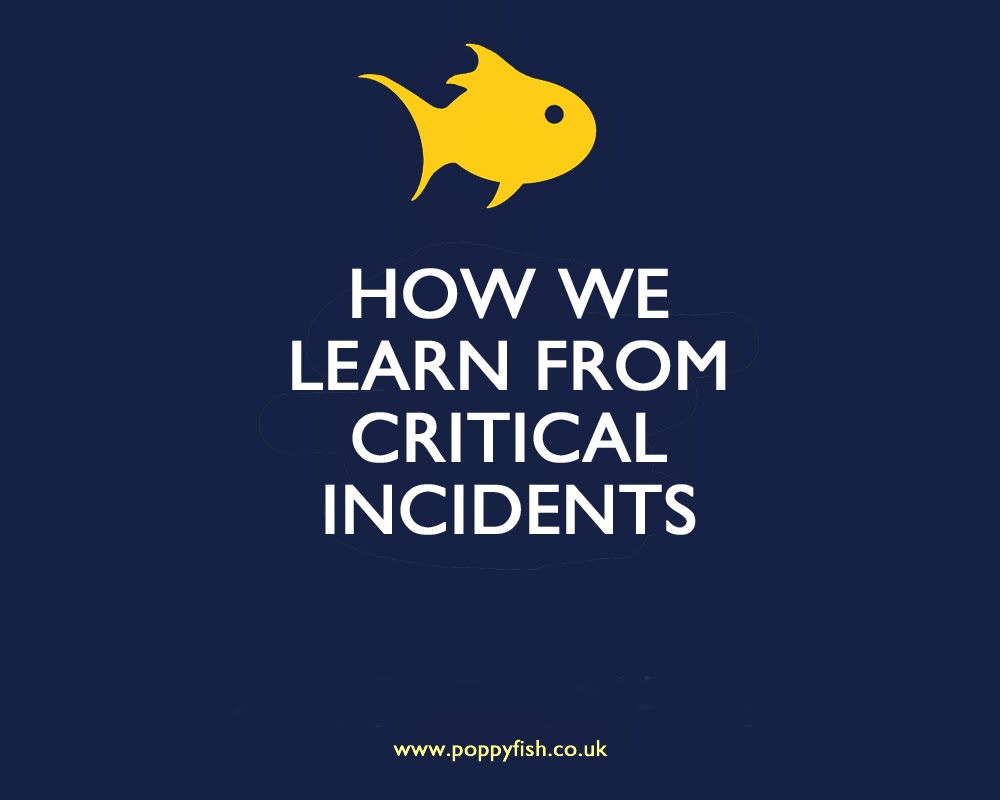How we learn from critical incidents
The tragic and ongoing story of Malaysia Airways flight MH370 has few positives. At the time of writing it appears highly likely that the aircraft, which disappeared on 8 March as it flew from Kuala Lumpur to Beijing, ditched somewhere in the sea off the SW coast of Australia, many miles off course from it’s planned route. No wreckage has been found and there has been no communication with any of the 239 people listed as being on board. No reason for the massive deviation in the flight plan or the loss of communication has been provided.
What continues to unfold is a fascinating and disturbing tale that has flummoxed just about everyone. But what we have already experienced as part of this story helps us expand our understanding. And here's how.
As humans we rely on our skills of pattern recognition to make sense of the world around us. When stories and events unfold we look to the validity of our own experience to assess the situation against our own memory banks of data, hoping to find some previous occurrence against which we can make an assessment of what is happening. Familiar patterns are reassuring and allow us to make sense of the world. Armed with that information we can also then compare the previous experience to the current experience and extrapolate an outcome. It’s a good operating model, allowing us to use our experience to build our understanding and provides a strong cause and effect mental model that we can use to help with our decision making. The more things happen, the better we can get at recognising the pattern and making more accurate predictions of outcomes.
Sounds good.
But when something happens that is so completely different to our past experience there is no comparative data against which the current situation can be assessed. When this happens we are at our most dumbfounded, our most confused and, in all probability, at our most anxious. Unfamiliar situations move us into the complex domain, where conditions of uncertainty and unclear linkages between cause and effect make decision making difficult. In short, there is no pattern to recognise and we don’t like it.
And I wonder if that is a little bit where we are with MH370. Our early attempts to determine what had happened to the aircraft drew a blank. The data just didn't fit. To help understand events the story has been rebuilt, using available data, piece by piece, looking for instances when what actually happened deviated from what we would have expected to happen. As we find each piece in that jigsaw, we can reevaluate it against our historical data, assess whether the outcome was predictable from the cause, and draw ever closer to being able to make predictions of what might have happened next. As we go through each stage of this we expand our dataset giving us just one more example to consult against each time we face other situations in the future. That process, of course, is called learning. And in the tragic story of MH370, that might be all the good that comes from the ongoing search.
What continues to unfold is a fascinating and disturbing tale that has flummoxed just about everyone. But what we have already experienced as part of this story helps us expand our understanding. And here's how.
As humans we rely on our skills of pattern recognition to make sense of the world around us. When stories and events unfold we look to the validity of our own experience to assess the situation against our own memory banks of data, hoping to find some previous occurrence against which we can make an assessment of what is happening. Familiar patterns are reassuring and allow us to make sense of the world. Armed with that information we can also then compare the previous experience to the current experience and extrapolate an outcome. It’s a good operating model, allowing us to use our experience to build our understanding and provides a strong cause and effect mental model that we can use to help with our decision making. The more things happen, the better we can get at recognising the pattern and making more accurate predictions of outcomes.
Sounds good.
But when something happens that is so completely different to our past experience there is no comparative data against which the current situation can be assessed. When this happens we are at our most dumbfounded, our most confused and, in all probability, at our most anxious. Unfamiliar situations move us into the complex domain, where conditions of uncertainty and unclear linkages between cause and effect make decision making difficult. In short, there is no pattern to recognise and we don’t like it.
And I wonder if that is a little bit where we are with MH370. Our early attempts to determine what had happened to the aircraft drew a blank. The data just didn't fit. To help understand events the story has been rebuilt, using available data, piece by piece, looking for instances when what actually happened deviated from what we would have expected to happen. As we find each piece in that jigsaw, we can reevaluate it against our historical data, assess whether the outcome was predictable from the cause, and draw ever closer to being able to make predictions of what might have happened next. As we go through each stage of this we expand our dataset giving us just one more example to consult against each time we face other situations in the future. That process, of course, is called learning. And in the tragic story of MH370, that might be all the good that comes from the ongoing search.





Comments
Post a Comment